How Long Indian Air Force will have “Flying Coffin” in her Squadron
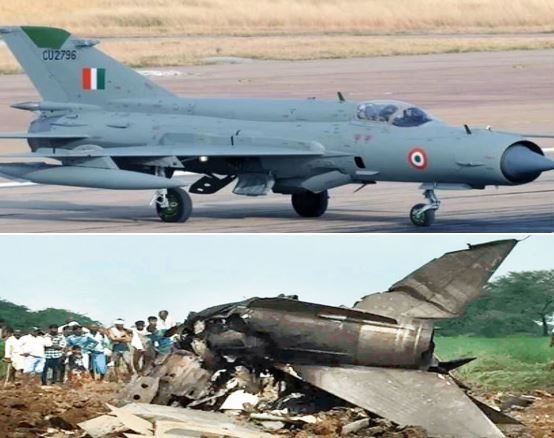

IAF MIG Crashes & Pilot Has Narrow Escape !!!
IAF MIG Crashes & Pilot Injured but Scummed to Injuries !!!
IAF MIG Crashes & Pilot Dies !!!
These are the Prime-Time News of every Indian Channel every couple of weeks. And Indian Air Force (IAF) just make a tweet “Deep sorrow about the demise of our pilot …. and we stand firmly with the family of our brave pilot”. Defense Ministry also snap their hands with a condolence message
And That’s All. Nothing beyond this? Where is RCA (Root Cause Analysis)? What are appropriate actions taken to avoid such accidents in the future? Where is assurance that there will be no more wailing in Indian Pilot’s homes?
In December 2021, IAF has encountered 2 major crashes and we lost 13 men in action, including the Chief of Army Staff. Many pilots had been lost in Sukhoi crashes. And IAF has lost many Aircraft and Pilots. But the recent crash of the Indian Air Force’s MiG-21 fighter jet on December 24th, 2021 in Sudasiri village near the Indo-Pak border in Jaisalmer, Rajasthan has once again provoked angry calls for retiring the country’s once frontline workhorse “MiG”, which has served India for over 50 years.
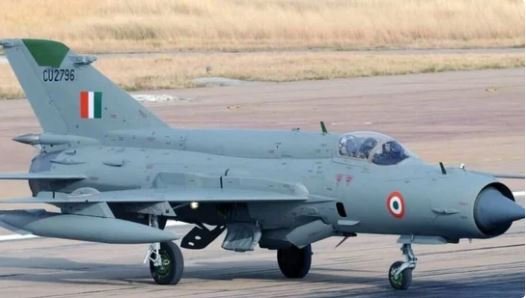
The MiG-21 (Mikoyan-Gurevich), whose NATO reporting name is ‘Fish-Bed’, was designed as supersonic jet interceptor aircraft by the Mikoyan-Gurevich Design Bureau (OKB) of the erstwhile Soviet Union.
The aircraft, which made its maiden flight on 16 June 1955, holds the record of being the most produced supersonic jet in aviation history.
The MiG-21 has had a long production run from 1959 to 1985 and underwent updates and modification thereafter in many countries including India.
The first single-engine MiG-21 aircraft came into the air force in 1963 and since then a total of 874 of them have been inducted, including various variants. Of the 874 MiG-21 variants inducted by the IAF, over 60% were license-produced in India.
The Soviet-origin supersonic fighters had become the mainstay of the Indian Air Force over the years, because of sheer numbers, even as they force more modern aircraft like the Mirages and the others.
During the time of its conception, the first MiG-21 was a spectacular machine with enormous capability and performance, outpacing the best jets of the 1960s era. The supersonic aircraft with the largest units ever manufactured (11,496) was called the AK-47 of airplanes. The aircraft continues to be flown by many Air forces around the world.
The aircraft first underwent an upgrade in the 1970s and the variant was known as the MiG-21 Bis.
With the Light Combat Aircraft Tejas, nowhere on the horizon, the IAF decided to upgrade 125 of the MiG-21 Bis to MiG-21 Bison in 2000, despite a spate of crashes in the 1990s that claimed the lives of many pilots.
The MiG-21 Bison is expected to be out of service completely by 2024.
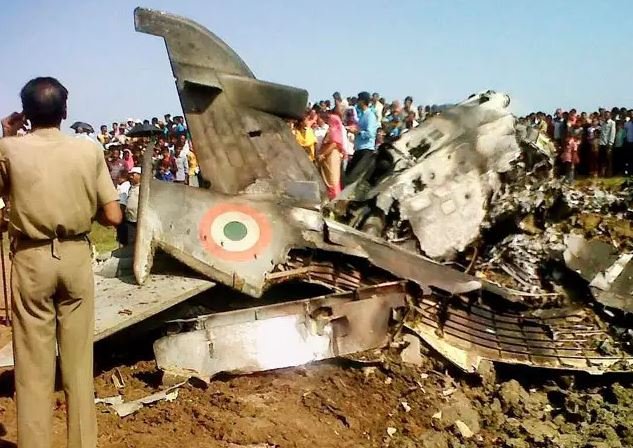
Here are the number of MiG which has been met with accidents since 2001
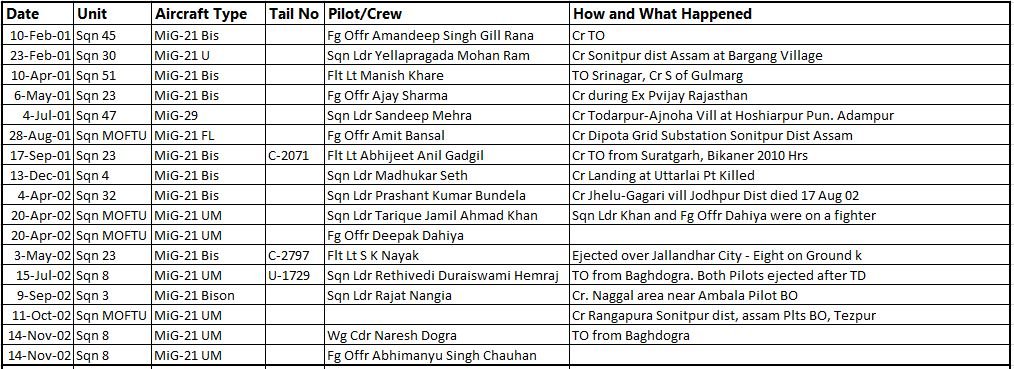
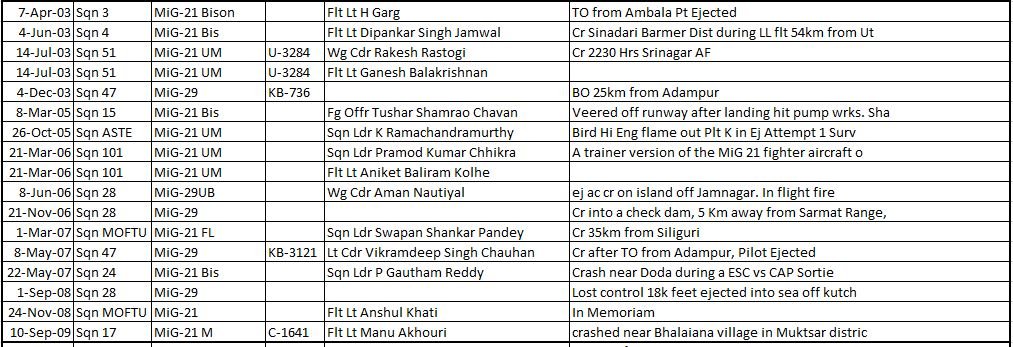

MIG’s history of accidents has raised many questions about the aircraft’s safety record on a number of occasions in the past few decades.
A section of the IAF believes that more than safety, the Russian aircraft has outlived its utility and should have been phased out in the 1980s. “The aircraft was designed in the 1950s and should have served maximum until the 1980s,” an IAF source said. “The Soviet Union, which made these fighters, retired them somewhere around 1985. The Russians took a MiG-21 from us to put them in their museum. That is how vintage these aircraft are.
In 2003 when the MiG-21s first earned the title ‘Flying Coffin’, the then-Defense Minister George Fernandes took a 25-minute sortie to counter “attempts to degrade these fighters and I want to dispel apprehensions about its safety”.
In 2013, then-Defense Minister A K Antony had said since its induction into the Indian Air Force (IAF) in 1963, as many as 482 MiG-21s had been involved in accidents leading to the death of 171 pilots, 39 civilians, and eight personnel from other services.
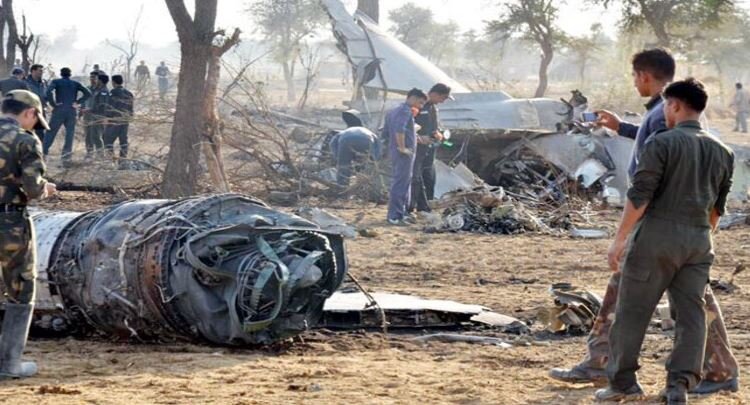
But till today more than 400 MiG-21s have been involved in accidents that have claimed the lives of more than 200 pilots during the last six decades, earning the fighter’s ominous epithets such as “Flying Coffin” and “Widow Maker”[1].
The former IAF commander quoted above said, “If these aircraft were not flying coffins, then they are flying coffins now. This aircraft is still flying because of the delay of the LCA program and the inability to go ahead with the larger acquisition. The accident rate is too high”.
Experts have said that more MiG-21s have crashed than any other fighter because they formed the bulk of the fighter aircraft in the IAF’s inventory for a long time.
IAF had to keep its MiG-21 fleet flying longer than it would have liked because of delays in the induction of new fighters.
According to the database of Bharat-Rakshak.com, an aviation website that works closely with the IAF, there have been 57 aviation accidents since 2016 till today involving all arms of the military — IAF, Navy, Army, and Coast Guard.
Of these, only 7 involved the MiG-21 Bison. This includes the one flown by Wing Commander Abhinandan Varthaman and was shot down by Pakistan in 2019, besides the three in this year.
If other variants of the MiG-21s are included, the figure rises many times.

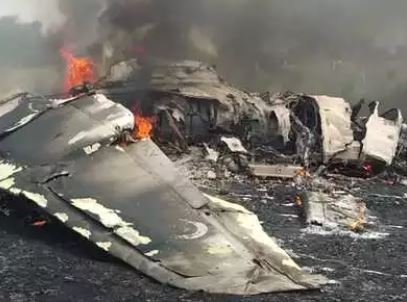
But for all its dubious distinctions, there are still many in the IAF who swear by the MiG-21s and argue that the ‘Flying Coffin’ tag is misleading. But they do agree that it has been flown beyond its utility only to maintain squadron strength as the Light Combat Aircraft (LCA) project got delayed
Interestingly, the notion of the MiG-21 being a ‘Flying Coffin’ doesn’t hold water. Surprisingly, after doing a thorough statistical analysis of the IAF’s history, the MiG-21 turns out to be the safest machine in its inventory. In fact, if one looks at the attrition rates of the IAF aircraft since the 1960s, the MiG-21 comes at the bottom.
It turns out that since the aircraft were procured in far larger numbers (872) than others, the crash rate also seemed very high. The excessive media coverage of the crashes brought more spotlight on the vintage aircraft, developing a damaging narrative about its safety and combat capabilities.
The lot number of personnel of the IAF, serving and retired, vouch for the safety record of the MiG-21s.
IAF officers point out that the current chief, Air Chief Marshal R.K.S. Bhadauria flew the MiG-21 Bison solo after taking charge.
“I think calling the MiG-21 as ‘flying coffin’ is the biggest myth. Our previous Air Chief, ACM BS Dhanoa proved to everyone that indeed it is the safest of aircraft, by flying it as and when he could. In fact, his last flight was with Wing Commander Abhinandan,” he adds.
He further says that the aircraft has been a formidable asset to the Indian Air Force, and it proved its worth during the February 2019 dogfight with Pakistan’s F-16s.
As per the data compiled by Airpowerasia.com, if one calculates the percentage of the yearly loss of the IAF aircraft, the MiG-21 comes at the bottom with just a .55 percent peacetime attrition rate in 58 years, with other aircraft being far above on the queue[2].
In other words, MiG-21s have been crashing at a rate of 4.67 aircraft a year (out of total strength 872), while the most unsafe aircraft in IAF’s history, Ouragan, was lost at the rate of 2.71 aircraft per year (total strength 113) during its service time, shows data compiled by the author, Dr. Shiv Sastry, a military aviation enthusiast.
Air Marshal Anil Chopra (retd), who once led the team for the MiG-21 Bison upgrade project in Russia, says the safety concerns raised about the aircraft in the media are often exaggerated.
Air Marshal Chopra (retd) referred to an article carried on his blog Air Power Asia, which was written by Dr. Shiv Sastry, an aviation enthusiast.
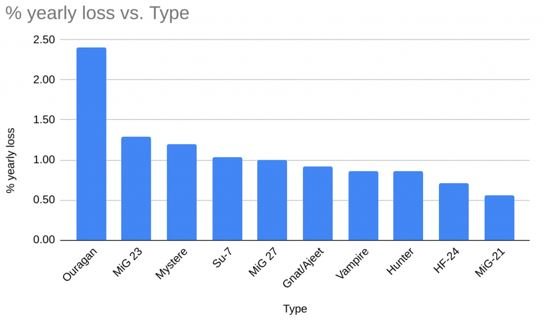
It was a study of all peacetime attrition of Indian fighters before the Mirages were inducted in the 1980s. Sastry has asserted that the MiG-21 has a better safety record than all others. He says the record of the MiG-21 speaks for itself. “The IAF pilots have carried out record MiG-21 sorties, and the force employed close to a thousand aircraft, which have performed exceptionally well,” he adds.
“Most often, neither the public nor the media knew the difference between MiG-21, 23, or 27,” he has written. “A MiG was a MiG was a MiG. Even a Mirage or An-32 was a MiG. From this grew the idea that the MiG-21 was a flying coffin, an unfair description.”
Group Captain MJA Vinod terms the epithet “Flying coffin” as unsubstantiated, saying, “It is a single-engine fighter and when it loses that engine, it needs to be re-started (called a ‘relight’). More often than not, it relights, but it takes a finite amount of time to relight any jet engine, so if you are below the minimum height (so with insufficient time to relight) you have to leave the aircraft. I haven’t heard of a single incident where MiG-21 ejection seat quit on someone.”
Another argument put forward is that the MiG-21 Bison is just an upgraded aircraft with better avionics and armament than all of the other variants.
A former IAF commander, who did not wish to be identified, said: “Be it any variant, the fact is that it is a MiG-21. He further added: “The MiG-21 Bison is an upgrade of the MiG-21bis, which was on its last leg of flying. What has improved is avionics and armament. Armament has no role in crashes. The engine remains the same. It is like taking a Ford T model car onto the roads today.[3]”
Even the IAF pilots who have flown the Soviet ‘Rocket-Ship’ vouch for its safety record compared to other aircraft of a similar generation.
Sources said one of the problems for MiG-21 accidents was that earlier pilot trained on subsonic Kiran trainer aircraft and then moved to a squadron of the supersonic MiG-21s.
A source, however, pointed out that the crashes in the last few years involving MiG-21 variants come at a time when they are being flown much less than earlier. Just the Bisons remain with the IAF as the other variants have been phased out over the last few years.
They do, however, agree that it is high time that the aircraft is finally replaced. Not because of safety issues but because the force needs more modern aircraft.
The sources also said the delay in the induction of advanced jet trainers led to the MiG-21s themselves being used for training pilots between the 1980s and early 2000s. “The move was a quantum leap for the pilots as the dynamics of the two aircraft are totally different,” an IAF source said. “With the induction of the Hawk trainers in 2008, the transformation is now much smoother.”
Nonetheless, the Bisons are on the way to being phased out from the IAF considering the growing public outcry with the aircraft having witnessed two accidents in 2021 itself.
It may take more than a few years considering the security situation India is faced with its two nuclear-powered neighbors, which demands that a significant number of squadrons be maintained until the replacements start arriving.

India’s indigenous platform Tejas, which was supposed to replace the Russian vintage fighter as IAF’s mainstay combat aircraft, took decades in development, forcing the government to continue to operate the MiG-21 aircraft.
India is now fast-tracking the procurement process for its homegrown LCA, although the deadline to meet the required squadron strength of 42 is unlikely to be met until 2030 [2]
The induction of 83 Tejas fighters scheduled to be delivered between February 2024 and December 2028 is expected to give a boost to the IAF combat fleet. The Indian Air Force has reportedly indicated a requirement for over 320 Tejas aircraft along with its variants – the Mk 1 and Mk 1A, with about 200 variants of the medium-weight fighter.
The Indian military experts are enthusiastically calling for Tejas to replace the Soviet-era MiG-21 aircraft, whose attrition rates have been spiking in recent years.
Although the two French Rafale squadrons are being inducted, with about 21 more MiG-29s and 12 Sukhoi-30MKIs being procured from Russia, IAF still needs the vintage MiG-21 Bison to hold the fort for now.
However, the depleting aircraft numbers and squadron strength make it hard for the government to announce the phasing out of old Russian jets. It will take at least a decade for HAL to supply the IAF with the required number of airframes.
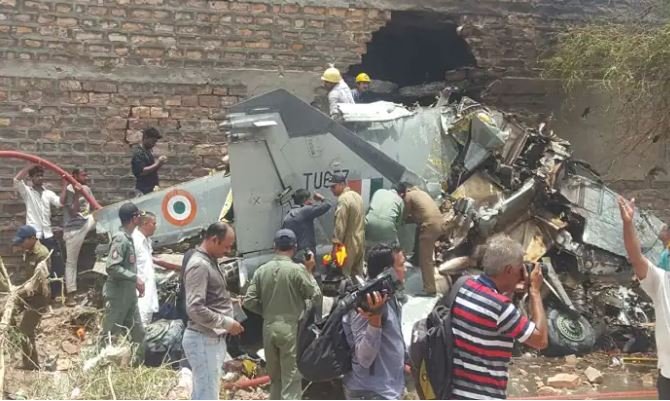
IAF MiG Aircraft has proven its battle readiness on multiple occasions, one of which occurred during the Cope India exercise held at the Gwalior air force range in February 2004. MiG-21s had decisively defeated even the modern F-series aircraft of the USAF in a mock combat exercise forcing the Americans to rethink their war strategy.
Aviation Week & Space Technology’s David A. Fulghum at the time quoted Colonel Mike Snodgrass, commander of the USAF’s 3rd Wing, as saying, “The two most formidable IAF aircraft proved to be the MiG-21 Bison, an upgraded version of the Russian-made baseline MiG-21, and the Su-30MK Flanker, also made in Russia.”
The IAF pilots notched up a staggering 9:1 kill ratio against the American pilots, an event that shocked the military enthusiasts around the world.
Everyone is aware that the MiG Bison was also involved in IAF operations after the unprecedented, peacetime, cross-border strike against terror targets in Pakistan’s Balakot two years ago.
Wing Commander (now Group Captain) Abhinandan Varthaman scripted military aviation history by downing a Pakistan Air Force F-16, seconds before his own MiG-21 Bison was hit by a missile forcing him to eject on February 27, 2019.
But to conclude, I have the same question which I asked at the start of the Article.
With Whining Heart, I Want To Ask Indian Defense Ministry, Indian Air Force (IAF), And Aircraft Makers That When We Will Stop Grieving The Untimely Deaths Of Our Pilots? When The Time Will Come When IAF Had No Squadron Of “Flying Coffins”? When The Time Will Come That The Wives Of Our IAF Pilots Don’t Have To Worry That Their Husbands Are No More Flying “Widow Makers”?
[1] MiG-21 crashes in Rajasthan, IAF pilot killed | Latest News India – Hindustan Times
[2] Not A Flying Coffin: Data Shows MiG-21 Has Been The Safest Fighter Jet With The Indian Air Force (eurasiantimes.com)
[3] 11 down in 5 yrs, 3 in 2021, but many in IAF still swear by MiG-21s despite its ‘safety record’ (theprint.in)
DISCLAIMER: The author is solely responsible for the views expressed in this article. The author carries the responsibility for citing and/or licensing of images utilized within the text.
